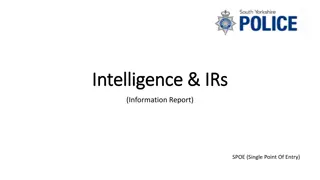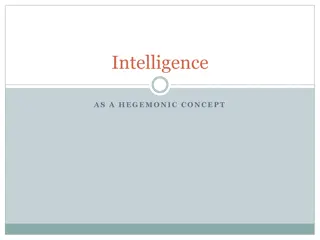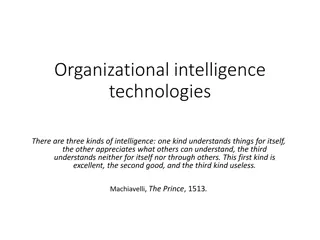Evaluation of Onboard Intelligence Systems DeepASL and SparseSep
In this evaluation, we assess the performance of two onboard intelligence systems - DeepASL and SparseSep. DeepASL is evaluated for performance, time efficiency, memory usage, energy consumption, and user experience, with a focus on accuracy and robustness. SparseSep is analyzed for its performance in terms of accuracy and robustness, memory utilization, time efficiency, energy consumption, and user experience applicability in real-life scenarios. Strengths and weaknesses of both systems are discussed.
Uploaded on Oct 07, 2024 | 1 Views
Download Presentation

Please find below an Image/Link to download the presentation.
The content on the website is provided AS IS for your information and personal use only. It may not be sold, licensed, or shared on other websites without obtaining consent from the author.If you encounter any issues during the download, it is possible that the publisher has removed the file from their server.
You are allowed to download the files provided on this website for personal or commercial use, subject to the condition that they are used lawfully. All files are the property of their respective owners.
The content on the website is provided AS IS for your information and personal use only. It may not be sold, licensed, or shared on other websites without obtaining consent from the author.
E N D
Presentation Transcript
Onboard Intelligence XINYU YANG
Challenges? 1. Performance (Accuracy, ) 2. Time (Runtime application?) 3. Memory 4. Energy 5. User experience 6.
DeepASL 1. Performance (Accuracy, ) Compelling experiments? Robustness?
DeepASL 2. Time (Runtime application?)
DeepASL 3. Memory
DeepASL 4. Energy
DeepASL 5. User experience Applicable in real life? People (users, developers, ) are willing to use it?
DeepASL Other comments? Strengths/Weaknesses?
SparseSep 1. Performance (Accuracy, ) Will it meet the accuracy requirement? Robustness?
SparseSep 2. Memory
SparseSep 3. Time
SparseSep 4. Energy
SparseSep 5. User experience Applicable in real life? People (users, developers, ) are willing to use it?
SparseSep Other comments? Strength/Weaknesses?























